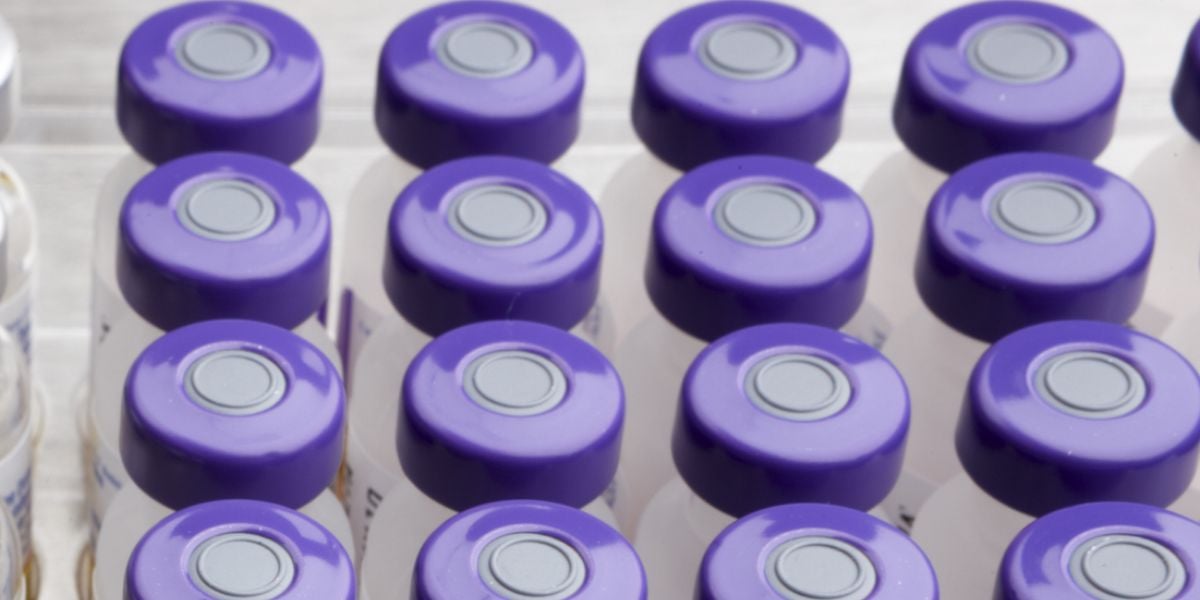The following guide will help with injecting insulin using a syringe. If you have any questions about injecting, contact your health team.
Before injecting, it is recommended to check the expiry date on the insulin you’re using to ensure it is in date. Wash your hands before handling your syringe and starting the process.
1. Preparing the syringe
Remove the caps at either end of the syringe, taking particular care with the cap covering the needle.
Pull the plunger back to draw up air into the syringe. You should draw up the same number of units of air as the number of units of insulin you intend to inject.
2. Preparing the insulin vial
With the insulin vial standing upright, push the syringe needle into the vial and inject the air into the vial. This ensures the pressure inside the vial helps you to draw up insulin.
If the insulin is a cloudy insulin, roll the vial gently between the palms of your hands until the insulin is fully mixed.
3. Drawing up the insulin
Hold the vial of insulin upside down and push the needle of the syringe into the vial. Ensure that the end of the needle of the syringe is surrounded by the insulin and not by air.
Draw up the required number of units plus a few units more.
4. Remove any bubbles
Hold the syringe with the needle pointing up and tap the syringe with a finger or fingernail to move any bubbles, that might be in the syringe, towards the top of the syringe.
With the syringe still upright, push the plunger into the syringe until the required number of units remain in the syringe.
Remove the syringe from the vial.
If air is still in the syringe, you will need to repeat from step 3.
5. Prepare a place to inject
Insulin should be injected into a soft fatty area of the body.
The belly, the top of the thighs and the buttocks can be used for injections.
The top of the upper arm can be used if you have sufficient fat on your arms.
- Read more on insulin injection sites
Pick up a fold of skin with your fingers. If the skin feels stiff, pick a nearby area of softer skin.
6. Injecting the insulin
Push the needle into the fold of skin at a right angle to the skin. With the needle fully in your skin, deliver all the insulin by pushing down the plunger of the syringe.
Once the insulin has been delivered, hold the needle in the skin for 10 seconds before removing the needle. This will help to prevent insulin leaking out.
7. Disposing of the needle
Insulin syringes should only be used once. When the injection is complete the syringe needs to be disposed of appropriately. A specialist needle clipping device can be used, which removes the needle from the syringe before disposal.
The syringe, whether with the needle in tact or not, should be disposed of in a medical sharps container.
- You can get sharps containers on prescription and you can also buy sharps containers from the Diabetes Shop.



